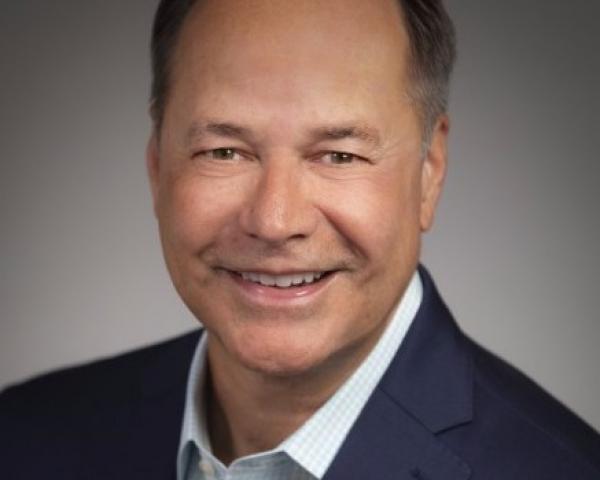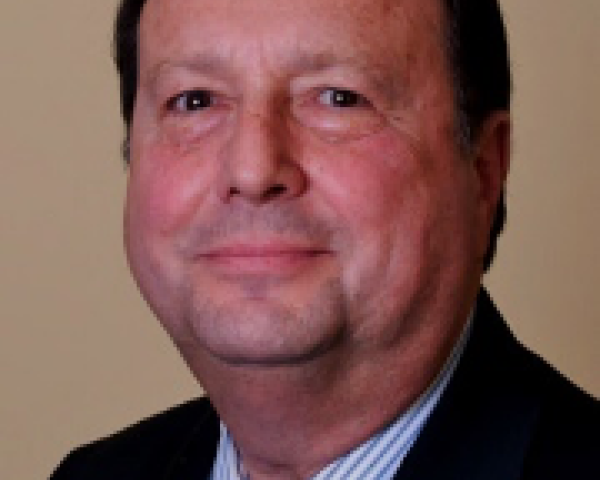KEY TAKEAWAYS:
--Premiums are soaring, and there is no relief in sight, as people keep moving into areas where homes are at higher risk to natural catastrophes, as electric vehicles and other new technologies raise repair costs, etc.
--But improved construction and greater building resilience standards can help, as can major preventive measures such as building a sea wall for Manhattan. There are also numerous insurtech solutions emerging that use sensors, AI and other technologies and that can switch the traditional insurance model from "insurance and pay" to "predict and prevent."
----------
In 1735, Benjamin Franklin wrote that “an ounce of prevention is worth a pound of cure.” He was referring not to medicine but to fire safety, because central Philadelphia, where he lived, consisted of connected wooden row houses. In fact, he was a founding member of the Philadelphia Contributorship, the first fire insurance company in America. Today, prevention may very well be the cure for the ailing insurance industry.
Throughout the history of risk and insurance, there have been periods of crisis and reform. In 1971, no-fault auto insurance was adopted in Massachusetts and spread to 19 states by 1974 with promises of lowering high auto premiums. In the mid-1980s, liability insurance rates soared, leading to tort reform. Most recently, Florida, California and Louisiana are enacting reforms in the face of threats from weather, inflation and legal system abuses.
As the property & casualty insurance industry struggles with the severe impact of extreme weather events, rapidly shifting market conditions, growing social and economic inflation and a rapidly transforming automotive and alternative transportation landscape, it has become obvious that fundamental, structural change is necessary and inevitable. Each of these single pressure points is striking. Collectively, they may represent the “new normal.” In any case, cost of insurance is on the rise while availability has become problematic, with both consumers and businesses absorbing the impact.
How Did We Get Here?
Catastrophic weather trends receive the most attention for good reasons but are not exactly new. According to a study by the Insurance Information Institute, average insured CAT losses were up 700% from the 1980s through 2020, spiking throughout each decade with noteworthy hurricanes: Andrew, Katrina, Wilma, Rita, Harvey, Irma and Maria. There’s little argument that events are more frequent and causing more costly damage, but these trends have been moving upward for some time.
Since the adoption of special, all-risk homeowner policies from previously limited or named peril policies in the 1980s, courts have further broadened insurance coverage. There is a residual tension between coverage for fortuitous loss and what some say are - or should be - uncovered maintenance costs, with much debate over exclusionary language. Meanwhile, U.S. homes have grown in size, averaging 2,522 square feet, doubling from 1975 to 2022, according to Statista. Likewise, home building materials, amenities and construction design have added to rebuilding costs, with increased construction in more disaster-prone regions as population shifts to the Southeast and Southwest, in particular. Between 2018 and 2021, the average annual homeowner rate change was 3%, and through the first three quarters of 2023 averaged 8.8%, according to S&P.
Just prior to the pandemic, auto insurers were engaged in a race to the bottom. Switch and save marketing flooded the market. Fast-forward, and inflation on auto parts, building materials and labor rates are perpetual “sticker shock” realities, despite some leveling-off. Auto repair technician shortages, social inflation and distracted driving behavior are newer and growing influences with no signs of alleviating in sight. Meanwhile, though less obvious, global reinsurance premiums are also driving up rates.
On the commercial lines side, business auto has struggled, with combined ratios for 11 of the last 12 years over 100, amounting to underwriting losses, per Fitch Ratings. Miles driven, demand for commercial trucking and driver shortages are among the causes, again with no clear change in sight.
See also: The Promise of Predictive Models
Just the Beginning
P&C insurers are pulling all the levers. Rate increases are across the board in auto, home and commercial lines. Tighter underwriting rules, restrictions on new writings, pullbacks in select states or product lines are reverberating throughout the industry. Some insurers are scheduling roof limits based on roof age or only offering ACV protection. Higher deductibles or percentage of limit deductibles are emerging or instantly become the only option in coastal areas when homeowners have little to no choice and are pushed into state wind pools or non-admitted E&S insurers. The result is more cost and less coverage, serving as a shift to greater self-insurance.
Allstate told its captive agents in August that it will effectively be reducing their commissions, and other insurers are trying to reduce their administrative costs, but the costs of insuring risks are projected to increase and remain high for the next few years – double-digit rate increases are just the beginning.
High Premiums Here to Stay
There’s lots of evidence to forecast that high premiums are here to stay. Thus far, loss costs have outpaced rate increases, and once they do catch up there is no reason to believe premiums will decline. Insurance to value (ITV) is emerging as an issue as property values and rebuilding costs have soared. The population shift to disaster-prone areas is not slowing. Auto technology, EV repair and parts costs on top of more expensive original equipment car manufacturer repair procedures are all on the rise. Social inflation fueled by juror attitudes, nuclear verdicts of $10 million or higher and litigation funding are gaining more attention (even though the term was coined by Warren Buffett as long ago as 1977 in a shareholder letter, according to the NAIC/CIPR Research Library). In many cases, consumers choose to reduce coverage or drive uninsured. Bankrate says there are an estimated 32 million uninsured drivers in the U.S., a number that is likely to grow.
The implications can be distilled to a greater proportion of self-funded risks for consumers and businesses.
Predict and Prevent
A new paradigm of predict and prevent is gaining traction. The Insurance Institute for Building and Home Safety (IBHS) has encouraged the insurance industry to influence improved construction and greater building resilience standards. Sensor technology combined with preventative measures, such as moving assets from harm’s way, show promise but have a long way to go, balancing efficacy with pragmatic actions. Distracted driving avoidance and driver coaching is making a difference in larger fleets, with much room to improve smaller fleets and personal auto. However, predicting and prevention is also being applied more broadly, such as shoring up storm walls in places like Manhattan and Miami. Meanwhile the devastating Maui fires illuminate major gaps in prevention and how controversial measures to clear vegetation get in the way of progress.
The Role of Insurtech in Risk Transformation
Enabled by new and emerging technologies and funded by professional investors with the highest amount of available capital in history, numerous insurtechs have introduced first-generation solutions to insurance risk management. These solutions have primarily focused on a small number of high-visibility applications, including quoting, underwriting and distribution and claims. But few if any of these products have materially affected combined ratios and thus profitability, leaving insurers with no good response to current conditions other than talking rate.
See also: Convergence and the Insurance Ecosystem
Enabling Insurtech Solutions
- Sensors are a relatively low-cost, easy-to-deploy technology with large numbers of applications across homes and businesses and “wearables.” The sensors can alert users and carriers of impending risks, providing time to respond and avoid a loss, or at least limit the damage.
- Telematics widen the uses of sensors to include the integration of large volumes of contextual data to more accurately predict and prevent accident frequency, severity and injury. Crash detection, automated first notice of loss (FNOL), accident response and emergency services are powerful applications emerging from smartphone enables telematics.
- Artificial Intelligence (AI), while it has been used for many years in information and data management, has grown to include other more powerful iterations, including natural language processing (NLP), robotic process automation (RPA), machine learning (ML), computer vison CV) and the latest and most fascinating, generative AI. While not all of these AI solutions support risk prevention, many enable material cost savings. Computer vision has already been adopted for almost 40% of auto physical damage claims, enabling early total loss identification, automated repair estimate generation and parts procurement with limited human interaction.
- Geospatial data and analytics have high potential to identify, limit and avoid property risks from extreme weather and catastrophes. On the front end of the insurance process, pricing and underwriting, this data can ensure higher accuracy as well as risk avoidance. Insurtech geospatial platforms are expanding through partnerships and integrations, making it faster, easier and less expensive for insurers to consume and use multiple applications.
- Parametrics is a form of risk prevention in that it limits a carrier's exposure to a specific, narrowly defined “micro-event,” which vastly simplifies the pricing and underwriting of each covered event, eliminates most traditional claim costs and provides greater predictability of total exposure.
Many of these young companies, and their existing and emerging solutions, have the potential to enable the insurance industry to shift its paradigm from “insure and pay" to "predict and prevent.”
Of course, none of these solutions can have real impact until insurers decide to aggressively embrace and comprehensively implement them. Otherwise, the industry will continue to react ineffectively to elements of the current crisis, which will then be followed by reform that could well lead to greater customer self-funded risk management -- defying the founding insurance principle of risk transfer.
We trust that the industry will recognize that Benjamin Franklin was right about prevention and cure and will embrace innovative solutions, sooner than later.









